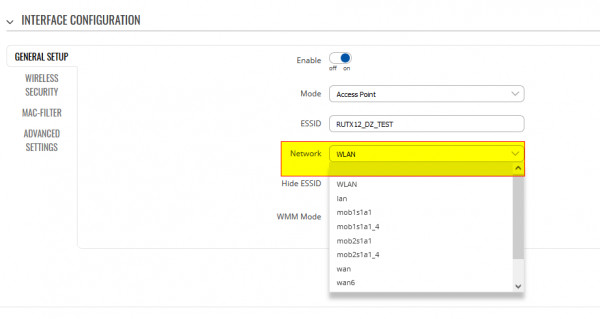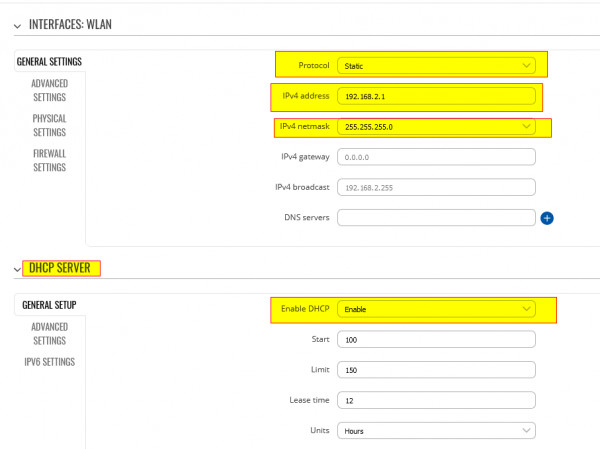Hello Peter,
I do apologize, there is a small inaccuracy when it comes to WiFi traffic splitting.
In this case you would not need to use Vlans.
1) Instead navigate to Network -> Wireless -> and click on edit of the Access Point.

2) Find Network and Click on the drop down menu. Type in your Wireless LAN name, for example I used WLAN and hit enter.

3) A new interface window will open. Fill in:
- IPv4 address: 192.168.2.1
- IPv4 netmask: 255.255.255.0
- Enable DHCP Server

4) Navigate to Network -> Interfaces and check that WLAN is up and running and type: wireless

From this point just please follow the guide from Configuring advanced static routes point:
https://wiki.teltonika-networks.com/view/Splitting_Network_Traffic_Via_Multiple_Interfaces#Configuring_Advanced_Static_Routes
To sum up, in order to implement this with WiFi, you do not need to create vlans or any wired interfaces. The first step is to create a wireless interface using the instructions I have provided above. After this the only thing left is to Configure Advanced Static Routes, guide on this Could be found following the link provided above. Note that if you would have more than one LAN subnet, then you might need to add additional VLANS, however, when it comes to replicating the provided example it is not needed.
Last Note: Just to clarify, you do not need to do the Separating Traffic Via Ethernet Ports and Separating Traffic With WLAN Interface since this has been accomplished with my initial instructions. From the Guide in the link all you would need to do is the Configuring Advanced Static Routes.
Also, here is an example on how a guest WiFi network is created, it discusses the same wireless interface creation example and could be used for further clarification purposes:
https://wiki.teltonika-networks.com/view/How_to_set_up_a_guest_WiFi_network_on_RUTX
Firmware used in the example: RUTX_R_00.07.00
Download Link: https://wiki.teltonika-networks.com/view/RUTX12_Firmware_Downloads
Best Regards,
Dziugas K.